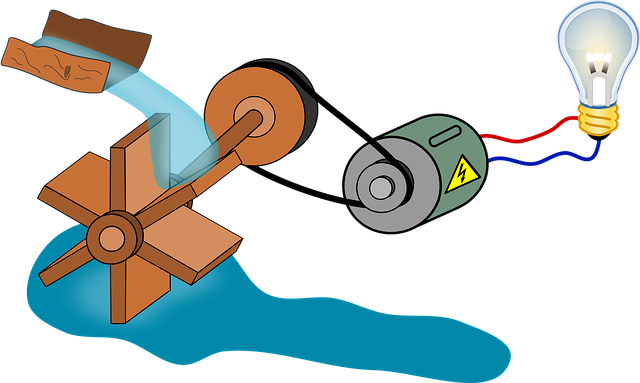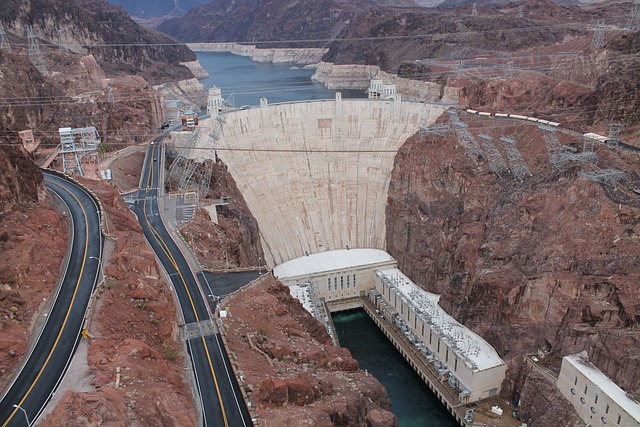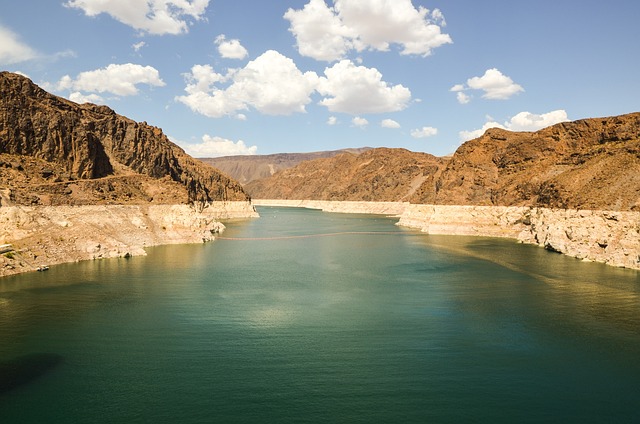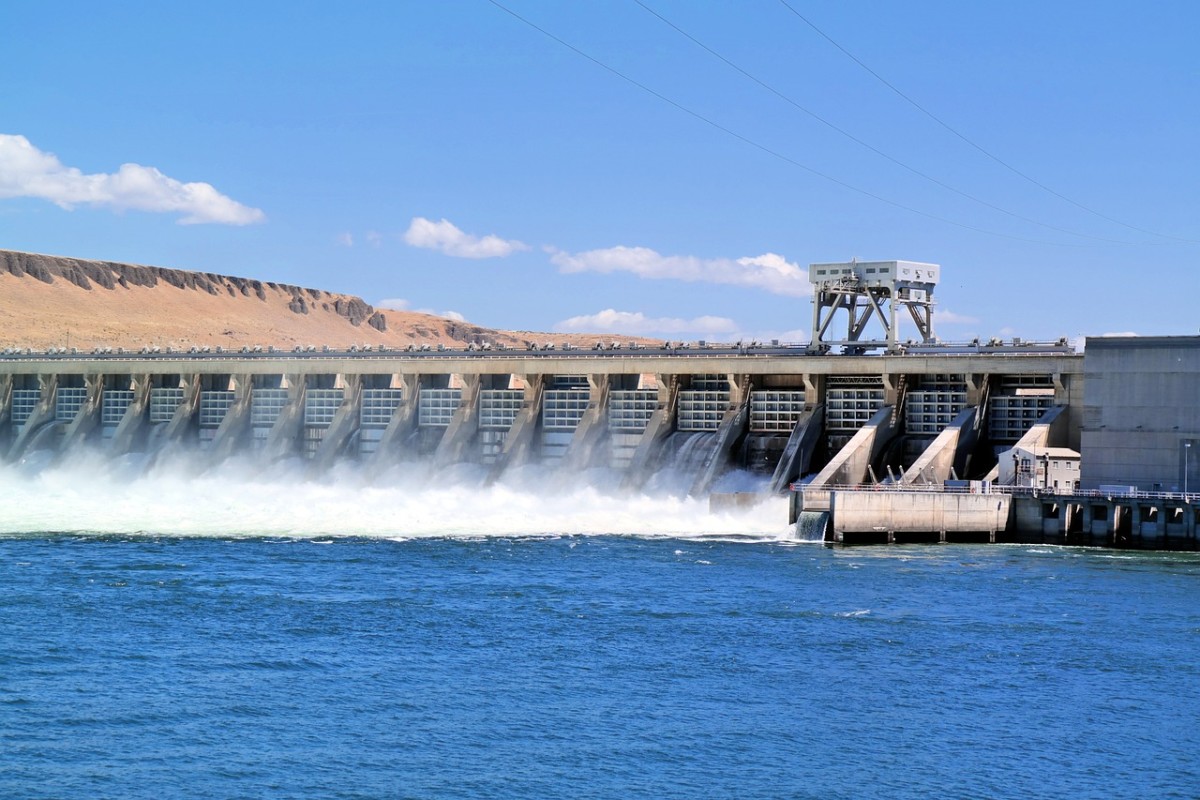What Exactly is Hydroelectric Energy
There are many benefits to using hydroelectric power. Including reduced operating costs and lower emissions. But what exactly is hydroelectric energy?
This article will provide an overview of how hydroelectricity works, its advantages. And potential drawbacks.
Hydroelectric energy is a clean, renewable source of electricity. That utilizes the natural flow of water to generate power.
It is becoming increasingly popular among homeowners and communities. Looking for a sustainable energy solution.
Hydroelectricity’s created through a process known as hydropower. Which involves converting kinetic energy from flowing water into electrical energy.
Definition: Generating Electricity from Water
Hydroelectric energy is a type of renewable energy. That involves generating electricity from water.
This process works by converting the potential energy. Of falling or flowing water into kinetic energy.
Which then drives turbines that produce electricity.
Hydroelectric power plants use dams to store and regulate the flow of water.
Allowing them to control the amount of electricity generated.
Hydroelectric energy offers an important option for sustainable power generation.
With its unique combination of reliability and clean operation.
As we continue to seek out new ways to meet our growing energy needs. While minimizing our impact on the environment.
It’s likely that we’ll see continued investments in this technology. Alongside other renewable sources like wind and solar power.
History of Hydroelectricity
Hydroelectricity is a form of renewable energy that has been around for over a century.
The first hydroelectric power plant was built in Niagara Falls in 1881. And it generated electricity to power the surrounding area.
Over time, more and more hydroelectric power plants were constructed around the world.
Leading to an increase in the use of this clean energy source.
During World War II, hydroelectricity played a crucial role. Powering factories and homes throughout Europe and North America.
This led to further advancements in technology. Including the development of new designs of turbine blades.
That were more efficient at converting water into energy.
Today, hydroelectric power is used all over the world. As a reliable and sustainable source of electricity.
Despite its many benefits. There are still challenges associated with using hydroelectricity as an energy source.
One major issue is the impact on wildlife habitats. Caused by dams and other structures required for generating power.
Yet, advancements in technology have led to better design practices. That cut these negative impacts.
While still harnessing the incredible potential of water as an energy source.
What is Mechanical Energy
Mechanical energy is the energy that an object has due to its motion or position. Mechanical energy can be either kinetic or potential.
Kinetic energy is the energy of motion. While potential energy is the stored energy an object has due to its position.
These two forms of mechanical energy are often used in hydroelectric power plants. To generate electricity.
In a hydroelectric power plant, water flowing through a dam creates kinetic energy. Which turns turbines and generates electricity.
This process converts mechanical (kinetic) energy into electrical energy. That’s used to power homes, businesses, and industries.
Plus, the water held behind the dam also represents potential (stored) mechanical energy. That can be converted into electrical power.
Understanding how mechanical energies work together is integral. When it comes to producing hydroelectricity efficiently and sustainably.
It’s important for both engineers and consumers alike. To have a clear understanding of how this type of renewable resource works.
So that we can continue to harness it as a reliable source of clean electricity in the future.
The Water Wheel

A water wheel is an ancient technology that has been used for centuries. Generating mechanical power.
It works on the principle. Of converting the kinetic energy of moving water into rotational energy. Which can be harnessed to perform useful work.
Water wheels were used in mills and factories. To grind grain or operate machinery before the advent of electricity.
Water wheels come in various designs, including undershot, overshot, and breastshot varieties.
An undershot wheel sits in a river or streams with its blades partially submerged in water.
While an overshot wheel’s positioned so that falling water strikes it at the top.
A breastshot wheel combines elements of both designs.
While traditional water wheels are no longer used for power generation. They have inspired modern hydroelectric dams. That harness the energy of flowing or falling water to produce electricity.
Hydroelectric energy is a clean and renewable source of power. That provides about 16% of global electricity production today.
Types of Hydroelectric Power Plants
There are three types of hydroelectric power plants: impoundment, diversion, and pumped storage.
Impoundment plants use dams to create a reservoir where water can be stored for later use.
When the electricity demand is high. Water’s released from the large reservoir and flows through turbines to generate power.
Diversion plants do not need a dam. Instead, they divert water from a river or stream through a canal or penstock to a turbine.
Pumped storage plants work by pumping water. From a lower elevation reservoir to a higher elevation reservoir.
During times when there is excess energy on the grid.
When demand spikes the water is released. Back down to the lower reservoir through turbines to generate electricity.
This type of plant provides valuable energy storage capabilities. That help balance out fluctuations in supply and demand on the grid.
Each type of hydroelectric power plant has its advantages and disadvantages.
Depending on factors such as location, available resources, and environmental considerations.
Yet, all three types offer renewable energy sources. That produce no carbon emissions or other pollutants while generating electricity.
As we move towards more sustainable energy sources in the future. Hydroelectric power will continue to play an important role.
In our efforts to combat climate change and reduce our reliance on fossil fuels.
Advantages of Hydroelectric Energy
Hydroelectric energy is a renewable electricity generation source of power.
That converts the kinetic energy of falling water into electricity.
It is among the most widely used sources of renewable energy globally.
And it offers several advantages over other forms of alternative energy sources.
Hydroelectric power plants have low operating costs because they rely on natural resources.
Such as water rather than having to pay for fuel like fossil-powered plants.
Hydropower systems are highly reliable with an average uptime rate of 90%.
Which means they can provide consistent power output throughout the year.
Hydropower is environmentally friendly since there are no pollutants emitted during operations.
Compared to fossil fuels or nuclear power plants. That generate greenhouse gases and hazardous wastes.
Moreover, hydroelectric energy helps reduce dependence on foreign oil imports.
Since it is a domestic source of electrical generation in many countries worldwide.
Finally, hydropower facilities serve many purposes beyond generating clean energy.
Such as flood control and irrigation for agriculture. Making them crucial infrastructure investments for sustainable economic development.
Disadvantages of Hydroelectric Energy
Despite being a popular and renewable source of energy. Hydroelectric power comes with its fair share of disadvantages.
One major disadvantage. Is the significant environmental impact caused by the construction of hydroelectric dams.
Building these dams can lead to ecological damage. Including habitat destruction and loss of biodiversity.
Also, the alteration of natural waterways can also disrupt fish migration patterns. And negatively affect aquatic ecosystems.
Another disadvantage of hydroelectric energy. Is its dependence on water resources and the amount of water available.
Which can be limited in some regions or affected by droughts.
This means that hydroelectric power plants may not operate at full capacity. Or may even shut down during periods of low water levels.
Additionally, hydroelectric plants are vulnerable to extreme weather events like floods or landslides.
Which can damage or destroy critical infrastructure.
Finally, while hydropower is generally considered to be clean energy.
Due to its lack of greenhouse gas emissions during operation. It does produce emissions during the construction and decommissioning phases.
These emissions include greenhouse gases such as carbon dioxide and methane.
Released from the decomposition of flooded vegetation and soil organic matter.
How Does Hydroelectric Energy Work?
Hydroelectric energy is a renewable source of power. That utilizes falling water to generate electricity.
The process involves the conversion of kinetic energy. From the flowing water into electrical energy.
Which can then be used for various purposes.
In simple terms hydroelectric power plants consist of dams. Built across rivers or other bodies of water which create reservoirs behind them.
When the water’s released from these reservoirs. It flows through turbines that are connected to generators, producing electricity.
The amount of electricity generated by hydroelectric power plants depends on several factors.
Such as the volume and speed of the flowing water and the size and efficiency of the turbines being used.
Additionally, hydroelectric power plants do not produce any air pollution.
Or greenhouse gas emissions during operation since they do not burn fossil fuels.
They also have a long lifespan compared to other sources of renewable energy such as wind or solar power.
In conclusion, hydroelectric energy is an important source of renewable energy. That has been in use for many years now.
Its advantages include high-efficiency rates, low operating costs, and minimal environmental impacts.
Despite its limitations. Such as geographical constraints and potential negative effects on local ecosystems.
It remains a viable option for meeting our growing demand. For clean and sustainable sources of electricity.
Examples of Hydroelectric Power Plants
Hydroelectric power plants are one of the oldest. And most reliable forms of renewable energy.
There are many examples of these power plants around the world. Some of which have been in operation for over 100 years.
One such example is Niagara Falls, located on the border between Canada and the United States.
The plant has a total installed capacity of 2.4 GW. And generates enough electricity to power more than 1 million homes.
The Hoover Dam

The Hoover Dam is an iconic example of hydroelectric energy.
Hydroelectric energy is derived from the power of water. The flow of water can be harnessed by building dams in rivers.
The Hoover Dam is a concrete arch-gravity dam. That was built on the Colorado River between Arizona and Nevada, USA.
It stands 221 meters tall and its construction started in 1931, completed in 1935.
The Hoover Dam generates about four billion kilowatt-hours (kWh) of electricity annually.
Which can supply electricity to over one million homes across its service area.
The dam’s power plant has seventeen generators. Capable of generating up to 2,080 megawatts (MW) in total capacity.
These generators convert the kinetic energy from falling water. Into electrical energy through rotating turbines.
Hydroelectric energy generation has several benefits. Such as it being renewable, sustainable with low carbon emissions.
And costs less compared to other sources like coal or nuclear power plants.
The Hoover Dam demonstrates how we can harness nature’s resources effectively.
While producing clean renewable electricity for our modern world.
Another example is the Grand Coulee Dam in Washington State, USA, which has a total installed capacity of 6.8 GW.
And is one of the largest hydroelectric power plants in North America.
The dam was built in the 1930s during the Great Depression as part of a government-funded project. To create jobs and stimulate economic growth.
In China, the Three Gorges Dam is one of the largest hydroelectric power plants in the world. With an installed capacity of 22.5 GW.
It spans over two kilometers across the Yangtze River. And took almost two decades to complete.
Despite the controversy surrounding its environmental impact. It remains a major source of clean energy for China’s rapidly growing economy.
Storage Systems
Storage systems are a crucial component of any energy production system. Including hydroelectric power plants.
Hydroelectricity is generated by converting the gravitational potential energy of falling water. Into electrical energy through turbines.
Yet, the amount of electricity generated. Is dependent on the volume and speed of water flowing through the large dams.
Hence, storage systems are essential to store excess power.
During periods when the demand for electricity is low. And discharge it when demand increases.
One method of storing hydroelectricity is through pumped-storage systems.
These systems involve pumping water from a lower reservoir to an upper reservoir. During off-peak hours when electricity demand is low.
The water stored in the upper reservoir can then be released back down.
To generate electricity during peak hours when there’s high demand for electricity.
Another type of storage system. Used in hydroelectric power plants is run-of-river (ROR) hydropower plants.
ROR operates without significant storage capacity. As they use a constant flow rate with minimal change in headwater elevation.
Thus generating reliable and stable output capacity throughout operation time.
But, this type of system requires consistent streamflow or rainfall to function optimally.
As it does not have extra storage capacity like pumped storage. Or conventional hydropower plants that can store excess energy until necessary.
In conclusion, storage systems are critical components. Ensuring efficient generation and distribution of hydroelectricity.
While maintaining stability on the grid network at all times. Regardless of its peak or off-peak periods.
Environmental Impact

Hydroelectric energy is a renewable source of power. That uses the force of falling water to generate electricity.
The environmental impact of hydroelectric energy varies. Depending on the specific location and design of the facility.
One negative impact is the alteration or destruction of natural habitats.
Particularly for fish populations in rivers that are dammed for hydroelectric power.
Additionally, building dams can lead to the displacement. Or relocation of communities living near the river.
Yet, hydroelectric energy also has several positive environmental impacts.
It produces no greenhouse gases, making it a clean form of energy with minimal air pollution.
Dams can also provide flood control, irrigation, and recreational opportunities. Such as fishing and boating.
In some cases, hydropower facilities can be designed to cut their environmental impact.
By incorporating fish ladders or other measures to help fish migrate past dams.
While there are both positive and negative environmental impacts. Associated with hydroelectric energy production.
It remains an important source of renewable energy.
That has significant potential to contribute towards reducing greenhouse gas emissions worldwide.
While providing reliable and affordable electricity generation.
Future of Hydroelectric Energy
Hydroelectric energy is a form of renewable energy. That harnesses the power of water to generate electricity.
It is one of the most reliable and cost-effective sources of clean energy.
Making it an important component in our transition toward a sustainable future.
But, despite its many benefits, hydroelectric energy also faces several challenges.
The future of hydroelectric energy looks bright. As more countries begin to recognize its potential as a source of renewable energy.
The increasing demand for clean and sustainable sources of electricity.
Has led to the development of new technologies. that can improve the efficiency and reliability of hydroelectric power plants.
These innovations include new turbine designs. Advanced control systems, and improved dam safety measures.
Despite these advancements there are still concerns. Over the environmental impact of large-scale hydroelectric projects such as dams.
This has led to increased investment in small-scale hydropower systems. That have less impact on local ecosystems.
While still providing a significant source of clean electricity.
While there are challenges facing the development and implementation of hydroelectric energy projects.
It remains an important part of our transition toward a sustainable future.
Conclusion: Renewable Energy Source
In conclusion, renewable energy sources such as hydroelectric energy.
Offer a sustainable and environmentally friendly alternative to traditional fossil fuels.
With hydroelectric power, the water cycle is harnessed to generate electricity. With minimal impact on the environment.
This form of renewable energy offers an abundant source of clean energy. That can be used for various purposes.
Moreover, investing in renewable energy sources. Such as hydroelectricity offers long-term benefits for both the economy and the environment.
It helps to reduce greenhouse gas emissions mitigating climate change.
While providing employment opportunities in the construction and maintenance of hydropower plants.
Additionally, it increases energy security. By diversifying the country’s fuel mix and reducing dependence on foreign oil.
In summary, embracing renewable sources of power. Such as hydropower is essential in promoting a sustainable future for our planet.
Governments and businesses should continue to encourage investment in this sector.
To achieve a cleaner, greener world for generations to come.
Recent Posts
Understanding Energy and Electricity: The Power For Progress
Energy and Electricity Energy and electricity are integral components of modern life, powering everything from homes and businesses to transportation and communication. Without them, the...
The Future of Wind Energy The future of wind energy is set to play a critical role in addressing global energy needs while combating climate change. As renewable energy sources like wind and...



